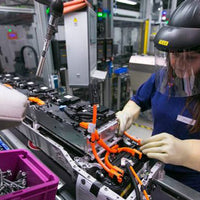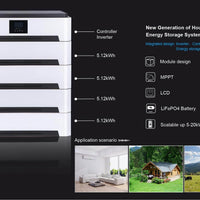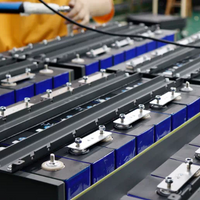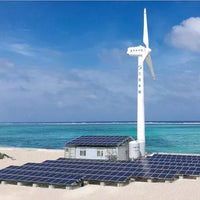The difference between lithium battery and lead-acid battery
The lead-acid battery is a chemical energy storage device that USES lead and lead dioxide as negative and positive active substances of the battery and dilutes sulfuric acid as an electrolyte. At present, due to its low initial cost, lead-acid batteries are widely used in projects requiring a low charge and discharge frequency, such as backup power for communication base stations. At the same time, due to the disadvantages of low power density, short battery life, high self-discharge rate, and low cycle life of the lead battery, the proportion of lead batteries in energy storage applications and electric vehicles is gradually reduced.
The lithium battery is made of lithium metal or lithium alloy as negative material and USES non-aqueous electrolyte solution. It has many advantages such as high energy, long service life, and lightweight. It is widely used in energy storage power systems such as hydraulic, thermal, wind power, and solar power station.
Compared with lead-acid batteries, lithium batteries have the advantages of high efficiency, long cycle life, accurate battery data, and high consistency. With the rapid development of battery technology and the rapid decrease of cost, lithium batteries have become the mainstream choice in household energy storage projects at present, and the market share of newly added chemical batteries is more than 95%.
How to select batteries for home PV systems?
The battery design ideas are different in different application scenarios, and there are three common application scenarios: spontaneous self-use (high or no subsidy for electricity), peak-valley electricity price, and standby power (unstable power network or important load).
Self-use: Choose the capacity of the battery according to the average daily electricity consumption of the household (kWh) (the default photovoltaic system has sufficient energy);
Peak-valley electricity price: calculate the maximum demand value of the battery capacity based on the total electricity consumption in the peak period. Then an optimal battery capacity is found in the region according to the capacity of the photovoltaic system and the benefit of the investment.
Backup power supply: The total power and expected off-grid time are the most critical parameters. According to the maximum load power and power consumption in the longest continuous power outage all day, the required battery capacity is finally determined.
Photovoltaic + energy storage application scenario
Photovoltaic + energy storage has become a very common way of utilization in foreign countries. There are many application scenarios. The following introduces several application scenarios of energy storage.
The small power distribution system composed of distributed power supply, energy storage device, energy conversion device, load, monitoring, and protection device is the main application of the energy storage system in China.
Charging stations for new energy vehicles
The development of new energy vehicles cannot be separated from the construction of the charging infrastructure. The establishment of supporting energy storage facilities is conducive to improving the quality of electric energy in the local power grid and increasing the selectivity of charging station sites.
Energy storage technology can replace diesel generators, reducing the cost of generating electricity while reducing air and noise pollution caused by diesel generators.
Trading with renewable power stations
The energy storage system participates in the paid peak-regulating auxiliary service of electric power, to make up for the shortage of power peak-regulating capacity.








0 comments